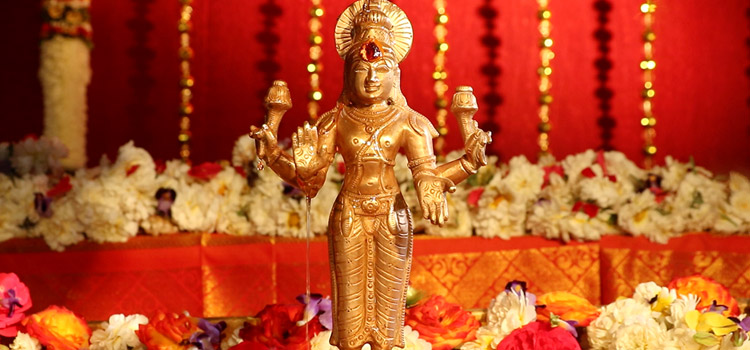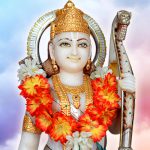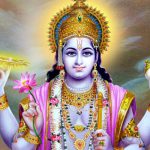Ratha Saptami – Honoring the Sun God
Ratha Saptami is a famous festival that is observed on the ‘Saptami’ (7th day) during the bright fortnight of the Moon (Shukla Paksha) of the month of ‘Magha’ in the Hindu calendar. In the Gregorian calendar, it falls between the months of mid-January to February. The festival is devoted to Surya or the Sun God and is also called ‘Surya Jayanti,’ ‘Magh Jayanti’ or ‘Magha Saptami.’ Lord Surya was an avatar of Lord Vishnu and the day celebrates his birth anniversary- the day when the Sun enlightened the whole world.
The word ‘ratha’ means ‘chariot’ and the Sun is usually depicted as sitting on a golden chariot driven by seven white horses. There are special events arranged in the temples which have the Sun as the primary deity. The Tirumala Tirupati Balaji Temple conducts special pujas for the occasion. Ratha Saptami has special significance in states like Maharashtra, Tamil Nadu, Karnataka, and Andhra Pradesh.
How Ratha Saptami Rituals Are Observed
Devotees get up before sunrise and have a bath. The Ratha Saptami Snan has to be performed at the time of sunrise. Taking a bath during this time is believed to free a person from all diseases and bestow good health. Hence, Ratha Saptami is also called ‘Arogya Saptami.’ In Tamil Nadu, devotees use Erukku (Giant Milkweed) leaves while taking the holy bath.

Once the bath is over, devotees offer ‘Arghyadan’ to the Sun God at sunrise. This is done by offering water slowly from a small Kalash or pot in Namaskar Mudra to the sun god. Devotees stand facing the Sun during this ritual. Many people perform this ritual 12 times, chanting twelve different names of Surya (Sun God), each time. After this, a ghee lamp is lit, and the Sun god is worshipped with red flowers, camphor, and incense. Those who observe these rituals will be blessed with good health, longevity, and success. Women create colorful and lovely rangolis displaying the image of Lord Surya on his chariot in front of their houses. Milk is poured into mud vessels, kept in the courtyard, and boiled facing the sun. The boiled milk is used to make sweet rice or ‘Paramannam’ Bhog which is offered to the Sun God.
Ratha Saptami Mantra Chanting
As per scriptures, chanting ‘Gayatri Mantra’ and reciting ‘Surya Sahasranaam,’ ‘Adityahridayam’ or ‘Suryashtakam’ on this day is considered very auspicious. The day is believed to confer the same benefits as observing noble and charitable acts during a solar eclipse. Those who worship the Sun God on this day, it is said, will get absolution for all their sins, even those committed during previous births.
Ratha Saptami also signifies the movement of Sun God in his chariot towards the northern hemisphere. Thus, it heralds the advent of summer and the onset of the harvesting season. For Indian farmers, it marks the beginning of the New Year.



I don’t think the title of your article matches the content lol. Just kidding, mainly because I had some doubts after reading the article.
Can you be more specific about the content of your article? After reading it, I still have some doubts. Hope you can help me.
I don’t think the title of your article matches the content lol. Just kidding, mainly because I had some doubts after reading the article.
аккаунты с балансом аккаунты с балансом
купить аккаунт купить аккаунт с прокачкой
магазин аккаунтов маркетплейс аккаунтов
аккаунты с балансом продажа аккаунтов соцсетей
продажа аккаунтов соцсетей купить аккаунт
купить аккаунт с прокачкой маркетплейс аккаунтов соцсетей
маркетплейс для реселлеров маркетплейс аккаунтов
Marketplace for Ready-Made Accounts Account Acquisition
Account Acquisition Account marketplace
Account Buying Platform Sell Account
Sell accounts Find Accounts for Sale
Accounts market Buy and Sell Accounts
Secure Account Sales Sell Pre-made Account
Account exchange Account Market
Secure Account Sales Buy and Sell Accounts
Website for Buying Accounts Secure Account Sales
Account trading platform Accounts marketplace
account exchange https://bestaccountsstore.com
buy pre-made account buy pre-made account
account sale sell pre-made account
buy pre-made account social media account marketplace
verified accounts for sale buy accounts
online account store website for buying accounts
account exchange service website for selling accounts
buy pre-made account buy and sell accounts
buy accounts account exchange service
sell accounts sell accounts
account trading service account market
secure account purchasing platform account buying service
buy accounts verified accounts for sale
account store social media account marketplace
account selling platform account trading platform
purchase ready-made accounts website for buying accounts
account purchase website for buying accounts
account selling platform ready-made accounts for sale
buy accounts database of accounts for sale
account market accounts marketplace
accounts marketplace account exchange service
purchase ready-made accounts verified accounts for sale
buy and sell accounts account acquisition
account acquisition account buying service
account exchange https://accounts-store.org/
accounts market accounts market
marketplace for ready-made accounts account store
ready-made accounts for sale https://accounts-offer.org
profitable account sales account marketplace
social media account marketplace https://buy-best-accounts.org/
account trading https://social-accounts-marketplaces.live
profitable account sales https://accounts-marketplace.live
account selling platform https://social-accounts-marketplace.xyz
website for selling accounts https://buy-accounts.space
account market https://buy-accounts-shop.pro
account acquisition https://buy-accounts.live
online account store https://accounts-marketplace.online
account marketplace https://social-accounts-marketplace.live/
verified accounts for sale https://accounts-marketplace-best.pro
магазин аккаунтов маркетплейсов аккаунтов
buy facebook ads manager https://buy-ads-account.click
buy aged facebook ads accounts buy facebook ads accounts
fb account for sale https://buy-ads-account.work
buy facebook profile https://ad-account-for-sale.top/
Эта информационная заметка предлагает лаконичное и четкое освещение актуальных вопросов. Здесь вы найдете ключевые факты и основную информацию по теме, которые помогут вам сформировать собственное мнение и повысить уровень осведомленности.
Получить дополнительную информацию – https://medalkoblog.ru/
buy aged facebook ads account https://buy-ad-account.click
facebook accounts to buy https://ad-accounts-for-sale.work
buy google ad threshold account https://buy-ads-account.top
buy old google ads account buy google ads verified account
buy facebook accounts for ads https://buy-accounts.click/
buy google agency account https://ads-account-for-sale.top
google ads agency accounts buy google ads accounts
buy google adwords account https://buy-ads-invoice-account.top
buy google ads verified account https://buy-account-ads.work
buy google ads threshold account buy google ads agency account
google ads account buy https://sell-ads-account.click
buy google ads account ads-agency-account-buy.click
facebook bm account buy verified bm
google ads agency accounts https://buy-verified-ads-account.work/
facebook business account for sale https://buy-bm-account.org/
facebook bm account buy https://buy-verified-business-manager-account.org/
fb bussiness manager https://buy-verified-business-manager.org
buy facebook verified business account https://buy-business-manager-acc.org/
buy facebook verified business account https://business-manager-for-sale.org
buy business manager https://buy-business-manager-verified.org
fb bussiness manager buy-bm.org
buy verified business manager https://verified-business-manager-for-sale.org
buy facebook business managers buy facebook bm account
tiktok agency account for sale buy tiktok ads accounts
Thanks for sharing. I read many of your blog posts, cool, your blog is very good.
tiktok ads account for sale https://tiktok-ads-account-buy.org
tiktok ads account for sale https://tiktok-ads-account-for-sale.org
buy tiktok business account https://tiktok-agency-account-for-sale.org
tiktok ads account buy https://buy-tiktok-ad-account.org
buy tiktok ads https://buy-tiktok-ads-accounts.org
tiktok ads account for sale tiktok ads account buy
tiktok agency account for sale https://buy-tiktok-business-account.org
buy tiktok ads https://buy-tiktok-ads.org
buy aged fb account buy and sell accounts gaming account marketplace